Best SQL Query Guides to Buy in November 2025
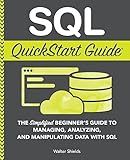
SQL QuickStart Guide: The Simplified Beginner's Guide to Managing, Analyzing, and Manipulating Data With SQL (Coding & Programming - QuickStart Guides)


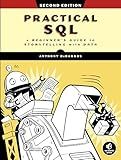
Practical SQL, 2nd Edition: A Beginner's Guide to Storytelling with Data


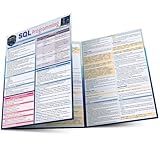
SQL Programming QuickStudy Laminated Reference Guide



SQL Pocket Guide: A Guide to SQL Usage


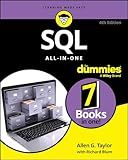
SQL All-in-One For Dummies (For Dummies (Computer/Tech))


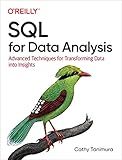
SQL for Data Analysis: Advanced Techniques for Transforming Data into Insights


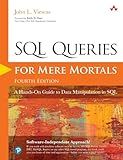
SQL Queries for Mere Mortals: A Hands-On Guide to Data Manipulation in SQL


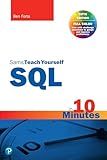
SQL in 10 Minutes a Day, Sams Teach Yourself


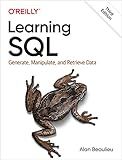
Learning SQL: Generate, Manipulate, and Retrieve Data


To use a window function with a case statement in Oracle SQL, you can include the case statement inside the window function's definition. This allows you to apply conditional logic to the rows in the window partition before the window function is applied.
For example, if you want to calculate the sum of a column based on a condition using a window function, you can use a case statement within the sum function. Here's an example:
SELECT column1, column2, SUM(CASE WHEN condition THEN column3 ELSE 0 END) OVER (PARTITION BY column1 ORDER BY column2) AS conditional_sum FROM table_name;
In this query, the case statement is used within the sum function to conditionally calculate the sum of column3 based on the specified condition. The window function is then used to calculate the sum over a specific window partition defined by column1 and ordered by column2.
By using a case statement within a window function in Oracle SQL, you can apply conditional logic to the rows in the window partition and perform calculations based on those conditions.
How to apply a case statement in SQL?
In SQL, a CASE statement is used to provide different output values depending on a specified condition. Here is the general syntax for a simple CASE statement:
CASE WHEN condition1 THEN result1 WHEN condition2 THEN result2 ... ELSE default_result END
Here is an example of how to use a CASE statement in a SQL query:
SELECT column1, column2, CASE WHEN column3 = 'value1' THEN 'Category A' WHEN column3 = 'value2' THEN 'Category B' ELSE 'Other Category' END AS category FROM table_name;
In this example, the CASE statement is used to create a new column category that categorizes values in column3 based on specific conditions. The resulting output will show the original columns column1 and column2, as well as the new category column with the corresponding categories based on the conditions specified in the CASE statement.
You can also use a CASE statement in other clauses such as UPDATE or INSERT statements to manipulate data based on specific conditions.
How to use a case statement with partitioning in SQL?
You can use a case statement with partitioning in SQL to perform conditional logic based on specific criteria within each partition of your result set. Here is an example of how to do this:
SELECT column1, column2, CASE WHEN column3 = 'value1' THEN 'Category A' WHEN column3 = 'value2' THEN 'Category B' ELSE 'Other' END AS category, COUNT(*) OVER(PARTITION BY category) AS category_count FROM your_table;
In this example, the case statement is used to categorize the values in column3 as either 'Category A', 'Category B', or 'Other'. The partitioning using the OVER clause then calculates the count of records within each category in the result set.
You can customize the logic in the case statement and partitioning based on your specific requirements and data. This technique is useful for aggregating data within specific groups or segments of your data set.
How to write a window function in SQL?
To write a window function in SQL, you can follow these steps:
- Start by defining the function with the OVER clause, which specifies the window over which the function should be applied. For example, you can use the PARTITION BY clause to divide the result set into partitions before applying the function.
- Next, specify the function that you want to apply within the window. This can include aggregate functions like SUM, COUNT, AVG, etc., as well as ranking functions like ROW_NUMBER, RANK, DENSE_RANK, etc.
- Finally, include any additional clauses or conditions that you want to apply to the window function, such as ORDER BY to specify the ordering of the rows within the window.
Here is an example of a simple window function in SQL that calculates the average salary within each department:
SELECT department_id, employee_id, salary, AVG(salary) OVER (PARTITION BY department_id) AS avg_salary FROM employees;
In this example, the AVG() function is used as the window function, and the OVER clause is used to calculate the average salary within each department. The result set will include the department ID, employee ID, salary, and the average salary within each department.
How to calculate cumulative sums using a window function and a case statement?
To calculate cumulative sums using a window function and a case statement in SQL, you can use the following query as an example:
SELECT id, amount, SUM(CASE WHEN condition_column <= current_row_value THEN amount ELSE 0 END) OVER (ORDER BY id) AS cumulative_sum FROM your_table;
In this query:
- id is the primary key or unique identifier for each row in the table.
- amount is the column containing the values you want to calculate the cumulative sum for.
- condition_column is the column containing the condition you want to use for cumulative sum calculation.
- current_row_value is the current row value of the condition column for the specific row.
- cumulative_sum is the column that will contain the cumulative sums.
This query uses the window function SUM() with a CASE statement to calculate the cumulative sum based on the condition specified in the CASE statement. The OVER (ORDER BY id) clause defines the window frame over which the SUM() function will be applied.
By adjusting the condition in the CASE statement and the ordering in the OVER clause, you can customize the calculation of cumulative sums based on your specific requirements.
